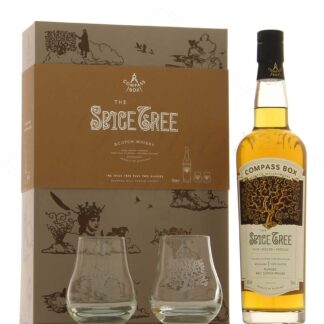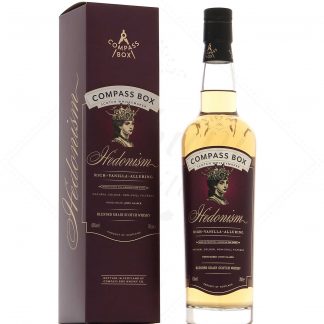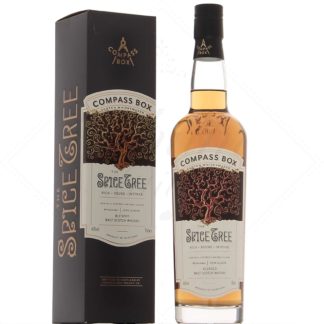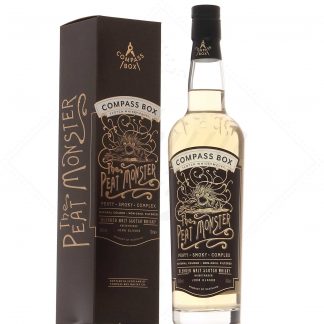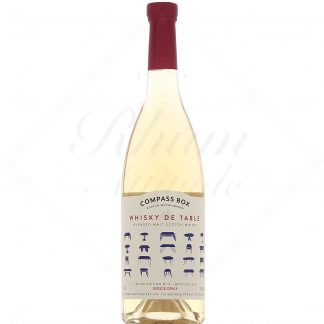Compass Box

Compass Box: whisky according to John Glaser
Compass box is an independent company founded in 2000 by one man, John Glaser. A true troublemaker, this American started out by working for Diageo for 6 years and was Marketing Director for Johnnie Walker. He made a simple observation: the world of whisky was too homogenous, and a fresh approach was needed.
Unlike traditional independent bottlers, Compass Box takes up one of the fundamentals of whisky history, blending: blended malts, blended grains and blends. Indeed, following the example of the great companies of the 19th century, John Glaser wishes to select (Scottish) casks in order to combine them as appropriately as possible.
However, single malts and single casks have a better image, an elegance that differentiates them from the cheap blends commonly found. So John Glaser faced a major challenge. His perseverance paid off in the long run, but it took him several years to change people's minds and find his audience.
Whiskymakers by Compass Box
In order to differentiate themselves from the purely marketed industrial world, Compass Box place themselves on the terrain of the artisan and the artist. In fact, they define themselves as Whiskymakers, introducing with this neologism some fundamental ideas: exacting standards, curiosity and experimentation.
Far from mass production, which wanted to make a lot at low cost, they wanted to concentrate on rather limited editions, where know-how and creativity would be put on a pedestal. It all began in 2000, when John Glaser created his first product in his own kitchen, "Hedonism", a blended grain that was a revolution at the time of its launch.
Although Compass Box has since moved to the heart of London (Chiswick), they are still pursuing the same objectives.
Compass Box philosophy
At the heart of their productions are always "simple" but imaginative recipes that highlight the quality of their raw material, whiskies. Likewise, particular care is taken in the choice of casks, a crucial factor in obtaining the benefits of an eau-de-vie aged in oak barrels. Last but not least, their whiskies are not cold-filtered and have no added colorants, so there is no age statement. In fact, it's the quality of the products chosen that counts, and age is no guarantee of superiority.
The approach of the company, which now has around ten employees, has also enabled blended malts to flourish in the 2010s.
As a spearhead, Compass Box has not neglected its commercial dimension, and their packaging and labels are among the finest on the market. They are the fruit of their collaboration with the talented Stranger & Stranger, true specialists in sophisticated graphic design.
John Glaser: Shaking up whisky codes
Key events testify to Compass Box's progressive approach.
In 2005, there was the Spice Tree incident. The first batches had been matured with wood shavings. The SWA (Scotch Whisky Association) sounded the alarm and declared the practice illegal. Although opposed to this decision, John Glaser halted production in 2006, before finding an alternative methodology in 2009.
More recently, in February 2016, Compass Box launched a major campaign advocating transparency in the whisky world so that everyone knows exactly what's in their glass. This followed a letter from the Scotch Whisky Association telling Compass Box that they had broken the law by giving out the full recipe for their blend.
Indeed, under European law, producers are only allowed to mention the youngest whisky, so as not to play commercial games with old spirits, which may be present in small quantities.
In the same way, Compass Box has won fans over with its winks and witty remarks.
One example is the legal change in the denomination of certain blends, from "Vatted Malt" to "Blended malt". As the law took effect at 0:00 on November 23, 2011, John Glaser filled a bottle of their "The Last Vatted Malt" (video link https://www.youtube.com/watch?v=q-vTlQFulYw) just moments before the fateful hour.
What's more, as part of their claim to transparency, he named one of his whiskies "The Three Year OId Deluxe". Composed of a tiny portion of 3 Year Old (minimum age), it underlined the inanity of the current law prohibiting disclosure of all detailed ingredients (age) of a blend.
This attitude didn't stop Bacardi from investing in the project in 2015.
The Compass Box range: Three visions of assembly
At present, Compass Box productions can be divided into four categories.
We start with the "Signature" range, again reminiscent of the cuisine created by John Glaser. This is a permanent range designed to offer the widest possible spectrum of aromas. It includes Asyla, Oak Cross, Hedonism, The Spice Tree and The Peat Monster.
The second range is "Great King Street". These are blends inspired by 19th-century recipes and refined by modern maturation expertise.
Artist's Blend and Glasgow Blend are the two versions on offer.
Finally, there are the limited editions, which are often more luxurious. Whisky de Table, Flaming Heart,Enlightenment, The General, Double Single and No Name are just a few examples of the limited-edition releases. Read less
